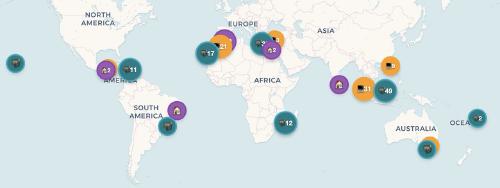Ways to Decrease Performance: Daily Standups
In this second article of my series, “Ways to Decrease Performance”, I will dive into the exciting topic of “daily standups.” Daily standups are an important ritual of many agile teams, which makes them a worthy subject in this series.
Contrary to popular belief, daily standups are unnecessary for a team to be agile. Quite the opposite: Reflecting on why the team has standups and if and how they help the team is crucial.
Disclaimer
My take on the topics covered in this series is (potentially) controversial, I know. And as always, remember that there rarely is black or white or right or wrong. There is no golden path perfectly suitable for every team. There is a lot of “it depends.”
The goal of this series is not to tell anybody that they are “doing it wrong.”
I desire to spark critical reflection on why you are following these practices. Is it because they help you, or because everybody is following them and “this is how one does it”?
What are Daily Standups
Daily standups are short daily meetings of the team to answer the following questions:
- What did I accomplish yesterday?
- What will I do today?
- What obstacles are impeding my progress?
The standup should only take a few minutes and therefore keep lengthy discussions to a minimum. Those are supposed to happen outside of that meeting.
Therefore, the primary purpose of a daily standup is to sync as a team, discover dependencies or bottlenecks, and share achievements. That sounds like a great thing to do. Right? So why do I put daily standups under assessment in this series?
Problems with Daily Standups
Most teams and leaders I have worked with in the last couple of months were surprised when I asked them, “What is the purpose of your daily standups?” — After all, this is how most Agile teams work. The habit of doing daily standups (or “dailies”) became as natural to them as “breathing.”
However, many teams would benefit from not doing standups.
Therefore I will share some potential problems that can come up with the practice of daily standups.
1. They (often) focus on the individual
The usual questions (What did I accomplish yesterday? What will I do today? What obstacles impede my progress?) focus on the individual. Of course, everybody gets their turn, so this is not an issue. Right? — Wrong!
The most successful teams I know put little emphasis on the “I” but a lot of emphasis on the “We.” High-performing teams often collaborate and achieve great things together, not in isolation.
Therefore, taking rounds on what “I” achieved can enforce unfavorable silos in the team. After all, we want to share what we have achieved, but what if that is the same as the person before us? Individuals can also feel pressured to have some individual achievements, which conflicts with working as a team.
We can fix this by answering the questions about what a pair or ensemble achieved or how this group is blocked. The drawback of this is that it doesn’t tell anything new to the people in that specific group. For them, the benefit of the standup might be close to not existing.
2. Information shared might not be relevant
When a team collaborates (if possible), the main reason for not communicating frequently is that two subteams work on different parts of the system and temporarily do not have a need to communicate. Thus, the enforced standup leads to groups sharing information that is highly irrelevant to the others.
If that information is relevant, I would expect any efficient team to communicate it (asynchronously) as soon as possible, not only during the standup. If a subteam or individual is blocked or needs input from other team members, I would expect them to raise that as soon as possible, too.
3. Daily standups can feel like status reporting
Especially when teams are working closely and are well aligned, the standup rarely sparks new information for the team. It might then quickly feel like a status report for someone less embedded in the team. Traditionally, I have seen product owners in Scrum teams fall into this category, as many companies involve them in multiple teams, and they do not have the time to be fully involved with a single team.
“Status reporting” first is frustrating to the people reporting and can feel like micromanagement. Second, it rarely justifies a synchronous meeting. If it is about reporting status, that could also happen asynchronously. Third, for someone interested in the status of certain projects, stories, or tasks, the daily standup is probably an inefficient way of getting this.
4. It reduces communication outside of standups
In some teams, I have observed that they tend to reduce contact between standups to avoid distracting each other. Especially junior folks are often worried about interrupting more senior folks with their impediments (after all, that is why we have a daily standup — or?).
Furthermore, if a lot of communication happens between standups (this is desirable for a real team), we do not need to share information during the standup. Thus, it either feels like theater (bad), we tell each other things we already know (bad), or we use it for different purposes, like social chit-chat (better).
This can lead to preserving information until it is standup time. Let me ask: If some information is not valuable enough to be shared immediately, is it even worth to be shared with a delay in a synchronous meeting?
5. It fosters lengthy discussions
Postponing talking about impediments, achievements, and plans for the next thing to work on to a fixed time during the day might look like an intelligent thing to do as it minimizes distractions. The consequence can be that multiple lengthy discussions are sparked simultaneously.
For example, let’s consider a senior engineer who discovers during the standup that two junior folks plan to work on something new, where they might run into issues or be blocked quickly because of a dependency of that task.
Without asking a few questions and potentially sparking a discussion, the senior person cannot understand if the junior engineers have considered those pitfalls or are completely unaware.
However, this might affect what the junior engineers will work on next. Thus, this is either clarified during the standup, or the plan might change directly after the daily when the senior engineer gets to sit with the junior people to dive into the matter. Furthermore, if this happens with multiple people during the daily, these discussions are batched at the same time, keeping people waiting.
This would be much easier when these discussions could happen throughout the day.
6. It delays raising of impediments
I mentioned this earlier, but it is so important that it deserves a separate section.
Having a standup where you answer the question of what impediments you have can have the effect of people waiting until the standup to raise their impediments.
To me, impediments should be raised and removed as soon as we see them. There is little value in delaying that information. Nothing is worse than a team member struggling with a task for half a day just because they discovered the impediment only after the daily standup.
7. It interrupts and enforces schedule synchronicity
Synchronous standups require every team member to be available at the same time. If your standup is at 9:00 AM, everybody must be working at that time. This reduces the flexibility of individuals to structure their day as it suits them best.
Even worse, if people are already working, they might need to interrupt their deep work and collaboration to synchronize with the team, which wouldn’t be their priority.
This, by the way, isn’t only an issue for remote teams. I have seen in-office teams spending too much time on finding the right standup time.
Common excuse: The standup time is a time-blockers to see the team
Someone might say: Yes, we do not need the standups for their original purpose, but it is great to have them on the calendar so that we can meet each other.
Well, let me tell you something: Teams should not need appointments to meet each other. This should be the default. It should be possible ad-hoc when there is a desire or need to meet. Being forced to stop whatever you are doing just for a few minutes to discover that there is nothing to be talked about is annoying at best.
Find other ways for occasional meetings throughout the day. In remote teams, we sometimes hung out in (Slack) huddles when we felt like this. A single engineer would start a huddle, and others could join when it is the right time for them.
What to consider instead
If you are wondering if daily standups are really that valuable for your team, here is what you could consider instead and what I have seen working well in the past:
- Collaborate more. The more you collaborate and communicate with each other, the less you need a daily standup.
- Share your achievements asynchronously. There is no need to interrupt somebody for this.
- Raise your impediments as they come up. If you are blocked, there is no shame in asking for help. After all, this makes good teams: Storming around impediments together and removing them as quickly as possible.
- When you want to start on a new topic, share that intent asynchronously. We rarely switch tasks exactly around standup time. We can share what we are going to do asynchronously. This allows people to chime in with questions, objections, or information before “standup time.” Furthermore, it will enable others to join you and collaborate on that topic.
- Make helping each other a priority. When something isn’t as straightforward as thought, jump on a call as soon as possible. Because we do not focus on individual achievements but on team achievements, the goal is to have everybody working unblocked as much as possible. Teams should not need a standup to do that.
TL;DR: Collaborate more synchronously and share more information asynchronously. Prioritize unblocking each other.
Whatever you are doing or trying, make sure you reflect on your process and experiment with modifications. If unsure, you might try dropping dailies for 2-3 weeks and see what changes in your team and if you like or dislike those changes. Conversely, you might try synchronous standups for some time and reflect on their value for the team. Whatever you decide, make sure to experiment, reflect and adapt continuously.
Conclusion
In this article, we delved into daily standups, a staple in many agile teams, and examined how they may be counterproductive in certain scenarios. This isn’t a blanket condemnation of the practice; instead, it’s an invitation for teams to evaluate their routines and effectiveness critically.
I discussed several potential issues with daily standups, from fostering individualism over teamwork to often being a platform for irrelevant information. They can also create an environment that encourages status reporting, reduces communication outside of standups, and inadvertently delays the raising of impediments. Additionally, they require schedule synchronicity that can disrupt deep work and limit flexibility.
But this assessment isn’t just about the problems – we also explored alternatives that could replace or augment the role of standups. More collaboration, asynchronous sharing of achievements and plans, raising impediments immediately, and prioritizing helping each other were identified as effective strategies.
In summary, daily standups may not always serve their intended purposes, and their routine use shouldn’t prevent teams from exploring other ways of achieving their goals. Teams should prioritize collaboration, effective communication, and performance over rigid adherence to potentially counterproductive practices. This requires a shift in mindset and a willingness to experiment with new ways of working. Teams should strive to be agile in practice, not just in name.
What is the purpose of daily standups in your team? How are you doing them? And: Are they fulfilling that purpose?





Use the share button below if you liked it.
It makes me smile, when I see it.